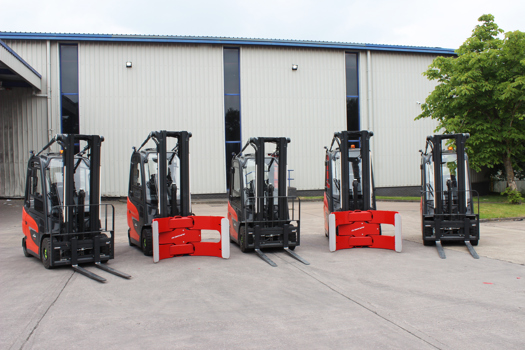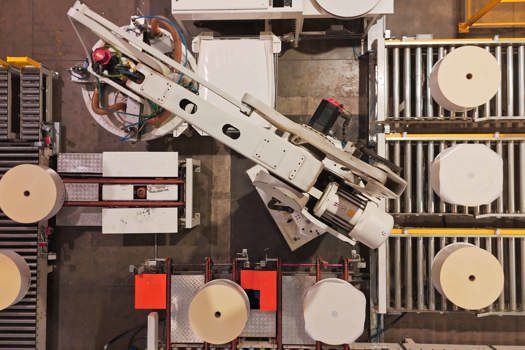Fespa members who responded to the trade body’s annual census reported a 9% compounded annual growth since 2007 in general business and 7% in their wide-format work, suggesting a market that is maturing but continues to offer opportunities for canny operators.
The survey of 1,254 businesses across more than 30 countries carried out by Infotrends, found nearly three quarters of respondents were positive about the future. In terms of geographic spread, half of respondents were from the Americas, 42% from Europe, Middle East and Africa, and 8% from Asia Pacific countries.
Of the respondents 45.6% were “very optimistic” about their own businesses and 27.8% were “very optimistic” about the future of the wide-format sector – a figure now back to the level of positivity recorded in 2007.
A total of 38.6% were “optimistic” about wide-format and 34.7% for their own businesses. In both cases, less than 2% said they were “not at all optimistic”. Since 2007 optimism from business owners about their businesses has grown significantly – from 34.6% in 2007.
The biggest growth sectors have been textiles, for clothes and interior decor, packaging samples and wallpaper and interiors. The textiles market has doubled in size since 2010.
A total of 71.9% said there has been an increase in customer demand for faster turnarounds, 66% for just-in-time requirements, 62.4% for shorter runs and 55.1% for delivery to the point of need.
Top of the shopping list for respondents in the wide-format space was UV-curable inkjet at 27.2% followed by textile printing machines at 21.3% and solvent inkjet at 16.3%. Bottom of the list given by Fespa were electrostatic products.
A total of 45% of respondents said they were considering investing to move into new markets, with 43% interested in improving print quality, 37% capacity, 34% speed of output and 33% unit cost.
In terms of technology, the biggest growth was in UV-curable inkjet and eco-solvent inkjet and the biggest decline was in analogue processes and solvent inkjets.
Meanwhile, the sign and display market is increasingly going digital, with 30% of respondents moving into this space.
Infotrends director, functional and industrial printing service, Ron Gilboa says: “Business owners are telling us that they are optimistic about their businesses. Fabric has doubled since 2010 and we’ve seen a great growth of products.
“What Fespa is doing right is tracking the trends with the trade show.”
Mixed UK expectations
Meanwhile, the BPIF’s latest Printing Outlook study on the health of the industry showed that output among printers in the UK was up in the first quarter of 2015, with business owners expressing cautious optimism for Q2.
One third of the 89 companies surveyed, which represent 3,878 staff and over £420m in turnover, said they had increased their output in Q1, marginally more than had been expected to, two fifths kept output at a steady level while 26% reported a decline.
The Q1 performance for output extends the positive growth run to two years. While 41% predict stable output in Q2, 34% of respondents expect to increase output levels and 26% expect output to decline.
The report suggests some printers benefitted from work generated by the General Election in Q1, although uncertainty surrounding the outcome was a concern.
Printers were also concerned about paper supply in Q1 following the administration of most of Paperlinx UK as well as worries related to major retailers exerting excessive pressure on their supply chain, particularly with regard to extended payment terms of up to 120 days.
A new Small Business Conciliation Service, to help settle disputes between small and large businesses, especially over late payment practices, was included in the Queen’s Speech last week.
But confidence in the general state of trade in the industry improved in Q1, with 45% of respondents agreeing this was the case, 47% reporting no change and only 8% thinking things had got worse.
Early BPIF analysis of Q1 showed that capacity was higher in April than in January, with the majority of firms operating in the 70%-89% range.
“The general feeling is that there is work there; companies are pretty busy and there are orders coming in and the volume is holding up,” says BPIF research manager Kyle Jardine.
“There was a slight recovery in margins, which is something that hasn’t happened in a while. Companies have taken the time to look at how they’re running their own operations to increase efficiency and they’ll need to keep doing that.”
The forecast for Q2 remains upbeat with 24% believing conditions will improve further. Although 69% expect things to stay the same. Printers predict that average energy costs will fall in Q2 but remain concerned that paper and board, labour and ink costs will increase.
A significant 67% said rivals pricing below cost was top of their worry list, 34% said poor output price levels was the biggest concern, while access to skilled labour was the third ranked concern, as selected by 33%.
And recent paper price rises lead the BPIF to note that there will be increased pressure on business costs coming through in Q2.
Jardine says that some businesses could pass on price increase, although this would take time.
“But there are also some sectors where customers don’t feel like they can pass them on and they take a hit so there will be some pain there,” he added.
Export demand remained under pressure, despite positive expectations, while UK demand for printing papers and boards decreased by 1.5% in 2014.
More positively employment levels defied the negative forecast as many printers recruited in Q1 and as in the Fespa Census, BPIF members are continuing to make strong capital investment plans.
“It’s not just about getting a new piece of kit but also about how that integrates with everything else,” says Jardine.
“Businesses are trying to tackle any bottlenecks and make sure that there’s an efficient flow through the organisation and also that people are motivated and trained to work.”










